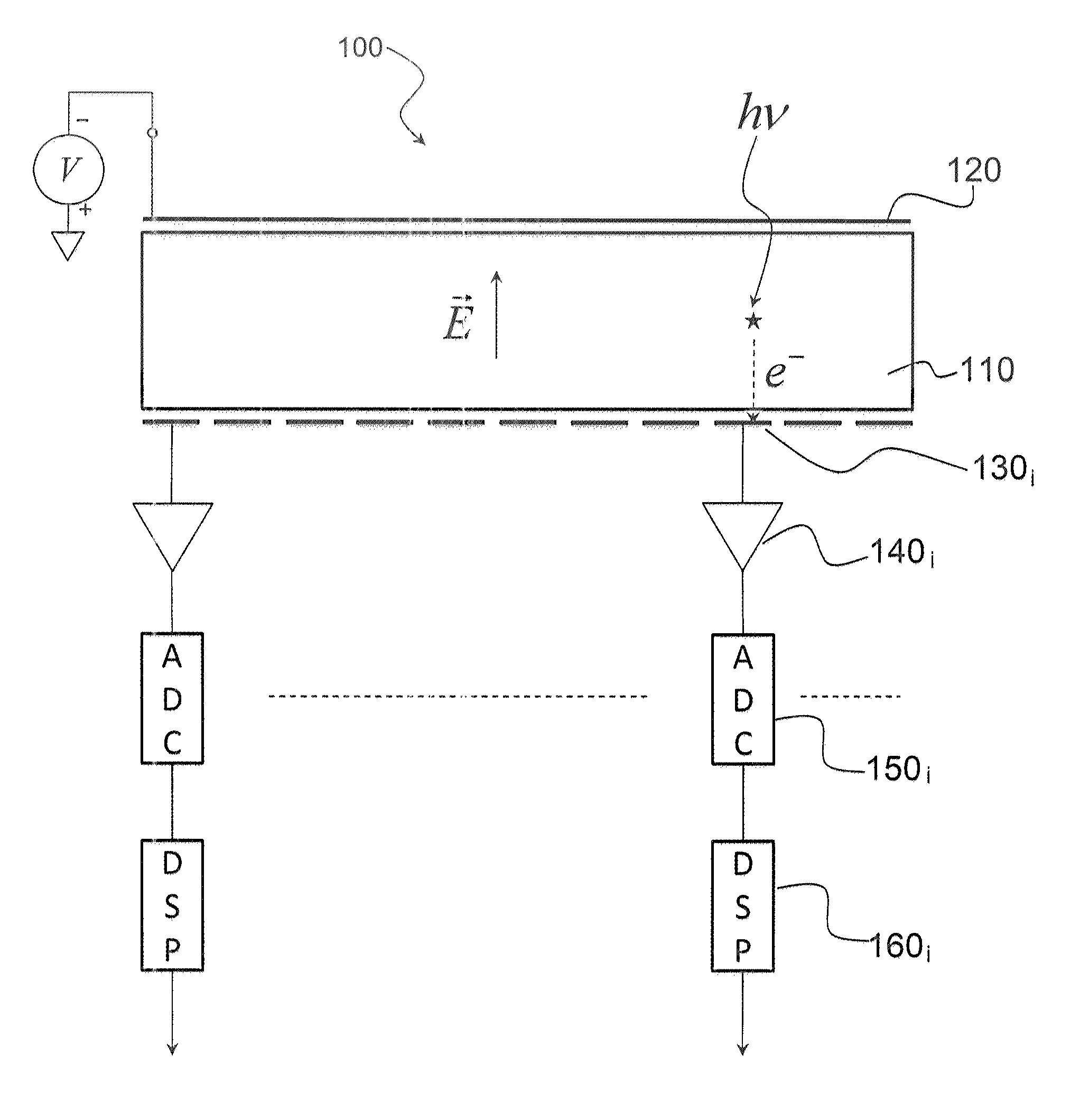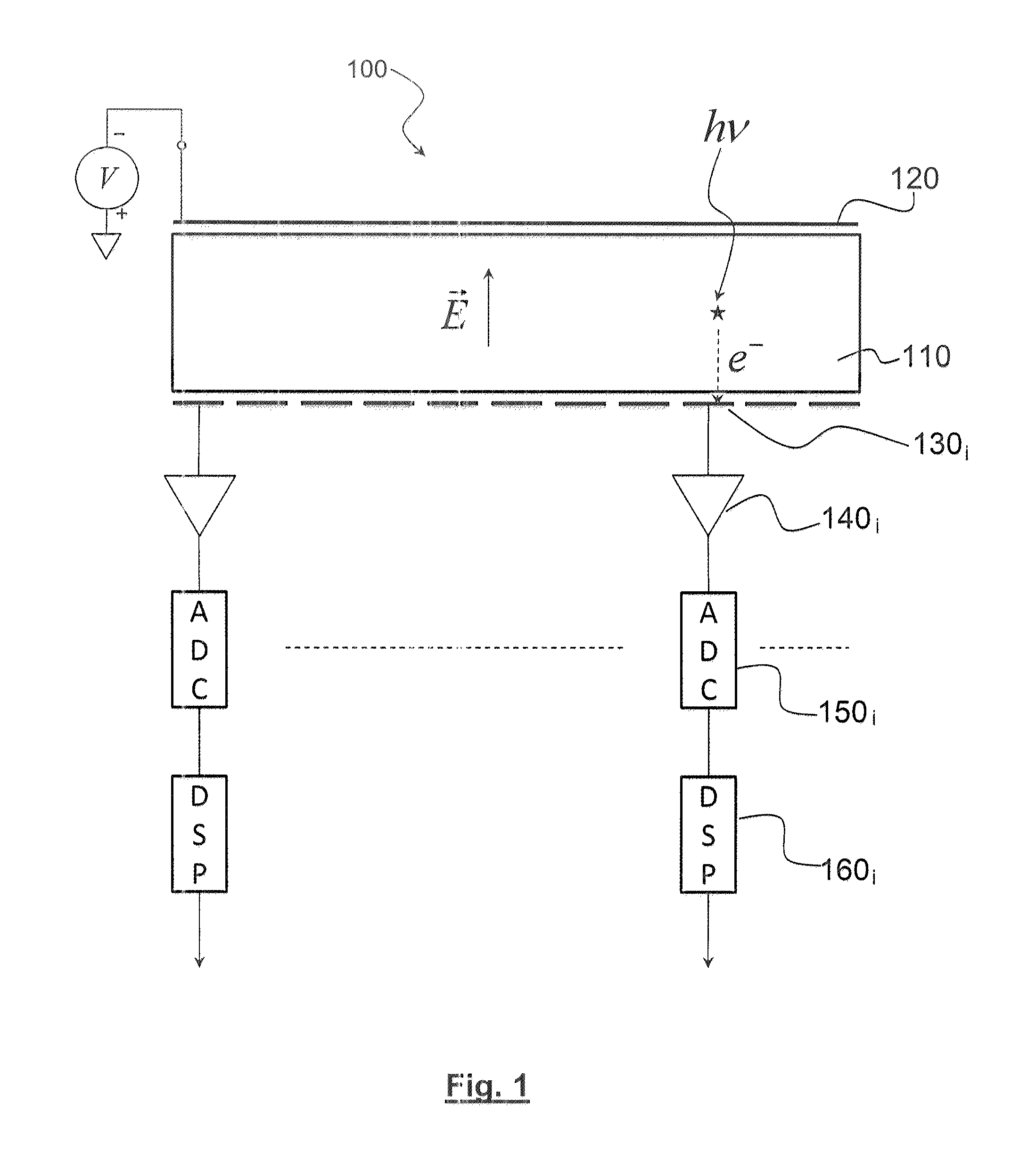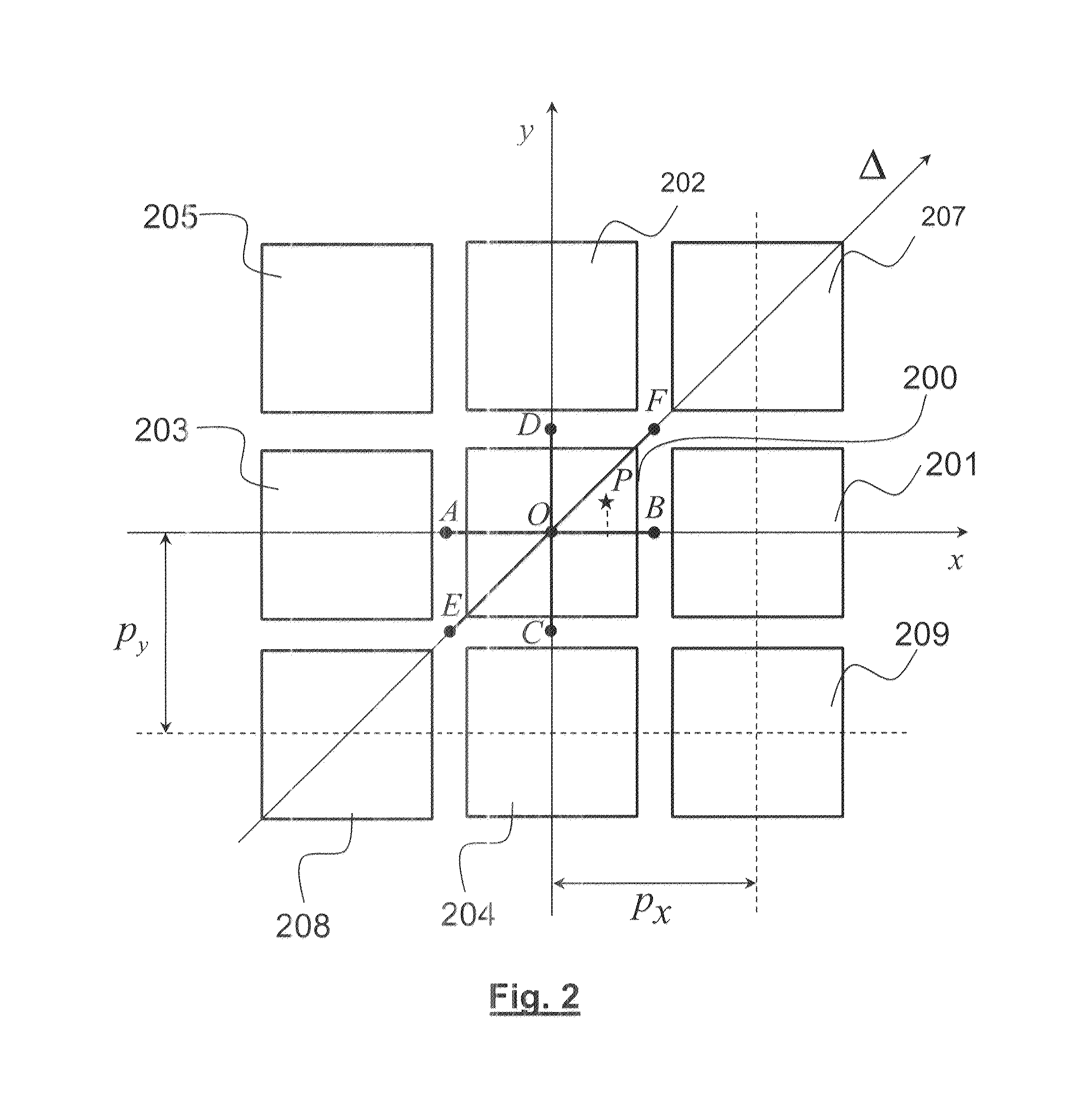Method and device for detecting ionising radiation using a pixelated photodetector
a technology of ionising radiation and detector, applied in the direction of measurement devices, radiation measurement, instruments, etc., can solve the problems of complex and costly detectors, inability to achieve significant resolution gains, and inability to accurately estimate the energy deposited by the photon
- Summary
- Abstract
- Description
- Claims
- Application Information
AI Technical Summary
Benefits of technology
Problems solved by technology
Method used
Image
Examples
first embodiment
[0026] the coordinate, x, of the point of interaction is estimated using an estimate of the maximum likelihood, by jointly maximising the conditional probabilities p(MQ|xi), Q ∈V, where the xi are multiple discrete possible values of said coordinate, where the conditional probability functions p(MQ|xi) have been determined beforehand in a calibration or simulation phase.
[0027]The coordinate, x, of the point of interaction can then be estimated by means of:
x^=argmaxi(∏Q∈VP(MQxi))
[0028]According to a variant of the first embodiment, the coordinate, x, of the point of interaction is estimated using estimation of the maximum likelihood by jointly maximising the conditional probabilities p( MQ|xi), Q ∈V, where MQ is the deviation normalised by the energy E0 of the signal of the affected pixel and where the xi are multiple discrete possible values of the said coordinate, where the conditional probability functions p( MQ|xi) have been determined beforehand in a calibration or simulation ph...
second embodiment
[0032] the coordinate of the point of interaction is estimated by:
{circumflex over (x)}=U(Bx)
where Bx is the coordinate of the barycentre of the pixels of V weighted by their receptive deviations, MQ, and of the affected pixel, weighted by the amplitude of the signal of said affected pixel at the time of impact, and where U(Bx) is a function which renders uniform the distribution of Bx under uniform illumination of the detector, determined by calibration or simulation.
[0033]The function U(Bx) is advantageously determined by U(Bx)=p[F(Bx)−1 / 2] where p is the pixelation interval of the detector and F(Bx) is the distribution function of the barycentre Bx under uniform illumination of the detector.
[0034]The invention also relates to an ionising radiation detector comprising a semi-conductor element which has a front side exposed to the ionising radiation covered with a first electrode, and a rear side covered with multiple elementary electrodes, known as pixels, where each pixel is asso...
PUM
 Login to View More
Login to View More Abstract
Description
Claims
Application Information
 Login to View More
Login to View More - R&D
- Intellectual Property
- Life Sciences
- Materials
- Tech Scout
- Unparalleled Data Quality
- Higher Quality Content
- 60% Fewer Hallucinations
Browse by: Latest US Patents, China's latest patents, Technical Efficacy Thesaurus, Application Domain, Technology Topic, Popular Technical Reports.
© 2025 PatSnap. All rights reserved.Legal|Privacy policy|Modern Slavery Act Transparency Statement|Sitemap|About US| Contact US: help@patsnap.com



